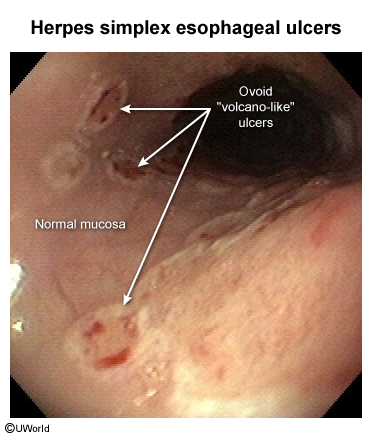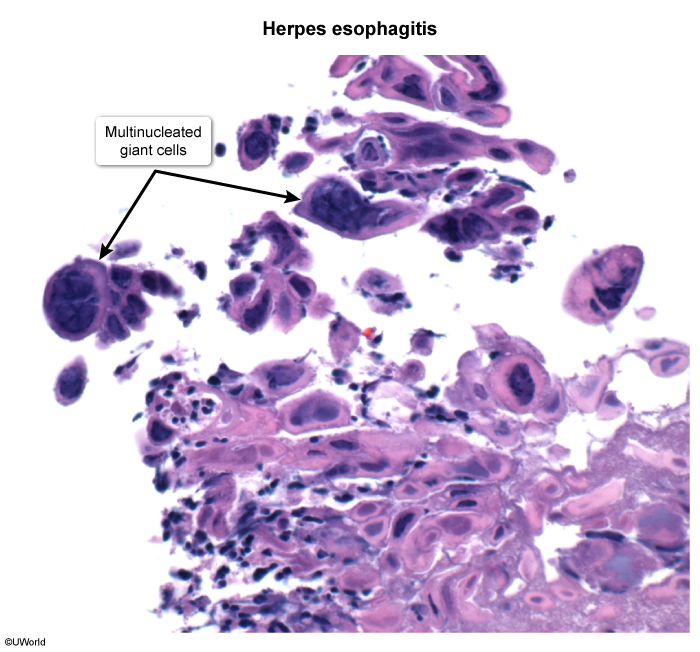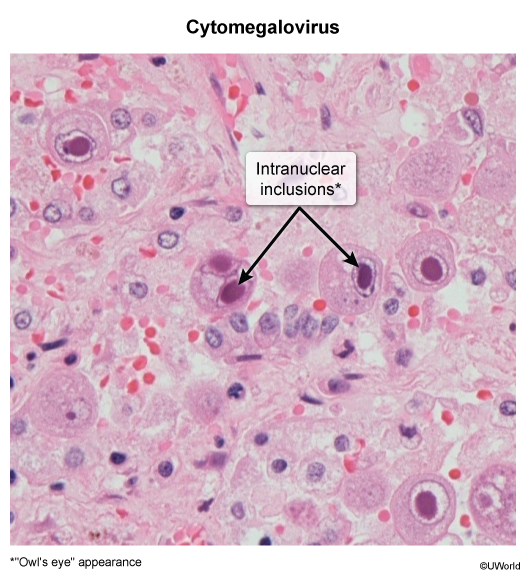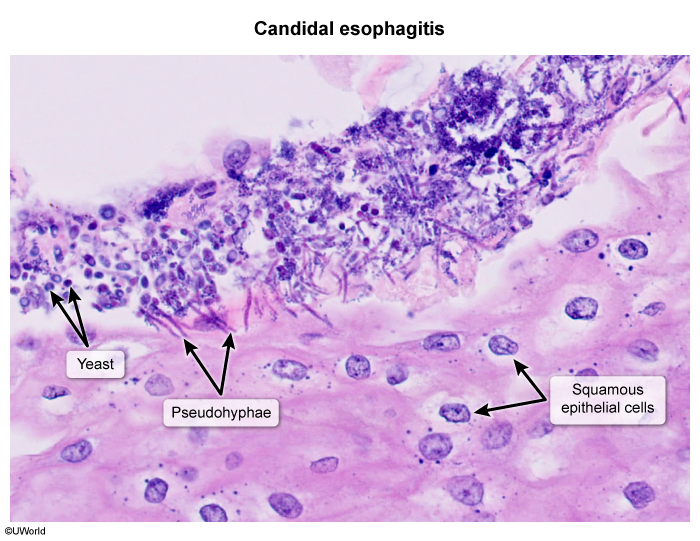Esophagitis
Article Sections
Introduction
Esophagitis refers to inflammation of the esophageal mucosa, with various etiologies including acid reflux, infections, and medication-induced injury. The clinical course varies depending on the underlying cause, and complications can include strictures or perforation.
Pathophysiology and clinical presentation
The pathogenesis and clinical presentation of esophagitis depend on the underlying etiology. Eosinophilic esophagitis (discussed in a separate article) is another important type of esophagitis, typically associated with atopic conditions and presenting with dysphagia and food impaction.
Reflux esophagitisChronic exposure of the esophageal epithelium to gastric acid leads to mucosal injury, resulting in erosive changes and, over time, complications such as strictures or Barrett esophagus. Risk factors for gastroesophageal reflex disease (GERD) include obesity, hiatal hernia, and dietary habits (eg, excessive fatty foods, alcohol) that predispose to reflux. Symptoms of reflux esophagitis include heartburn, retrosternal pain, and dysphagia. Odynophagia (ie, painful swallowing) is not typical.
Continue Learning with UWorld
Get the full Esophagitis article plus rich visuals, real-world cases, and in-depth insights from medical experts, all available through the UWorld Medical Library.
Images



